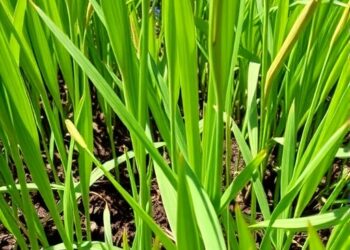A new way to measure biodiversity based on species’ unique traits shows ‘living fossil’ species do evolve.
The new measure, termed ‘evolutionary heritage’, highlights the importance of unique species traits – which include physiological adaptations, like beak variations in different birds – when assessing the richness and complexity of life.
This is particularly important in the face of rapidly changing pressures on our world’s biodiversity.
It can also help answer enduring debates in the field, such as whether ‘living fossils’ – species like the lungfish, which don’t seem to have changed for millions of years – do still evolve.
Scientists from Imperial College London, the Zoological Society of London and University of Canterbury, New Zealand have proposed the new metric to capture the accumulation and loss of specific evolutionary traits through time.
Led by Professor James Rosindell from the Department of Life Sciences at Imperial, the team’s results published in the journal Systematic Biology.
“The way we measure biodiversity incorporates not only species richness but also the richness of evolutionarily inherited traits that often get taken for granted,” said Professor Rosindell.
From history to heritage
There are many ways to quantify how biodiverse an ecological community is. One of the simplest merely consists of counting the number of different species that are present.
However, in the 1990s, there was a shift to focus on evolutionary history which considers the evolutionary distances between species – how closely they are related.
Imagine a tree of all life on Earth, where different branches represent different evolutionary lineages. The leaves that hang on the branches are the current species we observe today.
Evolutionary history is calculated by considering a set of species, and adding together all the branches that connect those species with a common ancestor. The idea is that two species that are more distantly related are more likely to be distinct from one another than species that diverged from each other relatively recently.
However, one drawback of phylogenetic diversity is that often fails to fully capture functional traits that make species physically and ecologically different from one another. Species may be closely related, but have very different traits, like Asian and African elephants that have evolved to adapt to their different environments. For example, African elephants have larger ears and more wrinkles on their skin that help them radiate more heat. This is where evolutionary heritage comes in.
“With evolutionary heritage, we’re trying to capture all the unique traits that we expect must exist and which could have all kinds of important uses, but which aren’t yet formally identified and measured,” said Professor Rosindell.
Evolutionary heritage incorporates not just the accumulation of biological features over time, but also their attrition— the gradual loss of features through mechanisms other than extinction.
Species not only become distinct from each other by gaining new traits along their evolutionary branches, but they also lose traits that they both inherited from their common ancestor. This process can be captured by calculations or simulations that use an algorithm that ascribe a random chance of gaining or losing an existing trait.
“We’ve captured something we’ve always cared about in evolutionary biology but have struggled to grasp mathematically,” said co-author Professor Will Pearse from the Department of Life Sciences at Imperial.
“Phylogenetic diversity was claimed to also be a proxy for feature diversity but it ignores that features not only arise, but are also lost in an evolutionary tree,” said co- author Professor Mike Steel, a biomathematician from the University of Canterbury.
He said: “Evolutionary heritage is a way to handle this gain and loss process in an integrated and mathematically natural way.”
Explaining living fossils
The team applied their framework towards settling a long-standing evolutionary debate surrounding the controversial concept of ‘living fossils’.
Traditionally, living fossils are thought of as species that appear to have changed little over long geological periods, often maintaining a strong physical resemblance to their ancient ancestors.
However, many scientists dislike the term because it implies that the species we see today are literally identical to their ancestors. Professor Rosindell said: “That idea is incorrect; evolution cannot simply be ‘switched off’. Organisms will continue to mutate and not all will survive to reproduce, so evolution will occur.”
Evolutionary heritage offers a new lens to understanding living fossils. The new framework defines and identifies living fossils by the predicted uniqueness and rarity of their evolutionary features rather than their superficial resemblance to ancient species.
The paper outlines a method where living fossils are identified not by their total ancestral features but by the uniqueness or rarity of these features among other living species that descended from the same ancestor.
“If we think of a set of ancestral features, some will not survive at all, some will survive in a very small number of living species, and others may be observed in thousands of descendent species today,” Professor Rosindell said.
“It’s the species with the rare ancestral features that jump out and get labelled as living fossils according to our method,” he said.
The team is now working on validating their ideas using genetic and trait data, as well as further developing their models for potential use in conservation applications and ecology research.




